Michael Novosad
Reviews By Author
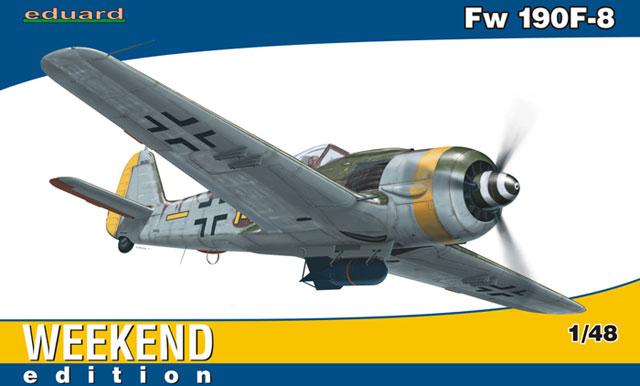
|
Fw-190F-8 Weekend KitPublished:
History and PerformanceThe Fw-190 entered operational service in the summer of 1941 and immediately left its mark on aviation history. Over 20,000 Fw-190s were built in various series and saw service on all fronts during the war. The Fw-190A series was initially designed as a fighter/interceptor, but its performance fell off dramatically at higher altitudes. The Fw-190F-8 was designed as a ground attack aircraft and performed this duty remarkable well. The Fw-190 was also flown by the air forces of Hungary, Romania and Turkey. See the Osprey publication “Production Line to Front Line Focke-Wulf Fw 190” by Malcolm V Lowe for a history of the design and combat of this aircraft. Kit ReviewInstructionsThere are twelve pages to the… more |
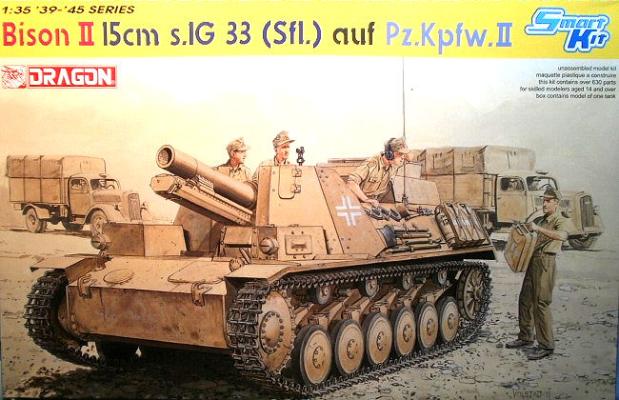
|
Bison II 15cm s.IG (Sfl.) Auf.Pz.Kpfw.IIPublished:
History and Performance The 15cm sIG33 infantry gun was first installed on converted Pz.Kpfw. I chassis and used in the early campaigns of May-June 1940. This combination resulted in a high profile vehicle that offered little protection to the crew. Afterwards, plans were developed to mount this weapon on a more suitable chassis. A prototype was mounted on a Pz.Kpfw. II chassis, but it was quickly realized that more room was required for the gun and crew. The chassis was widened and lengthened. Only twelve vehicles were built, and all were eventually shipped to Africa. All were destroyed in combat on that front. Kit Review: Instructions – The instructions are in the typical fold-out Dragon standard. There are 21… more |
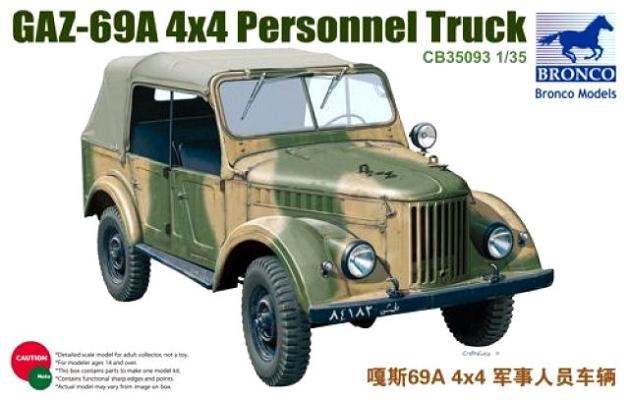
|
GAZ-69A Personnel TruckPublished:
History and PerformanceThe GAZ-69A was a four-wheel drive light truck designed and built for the Russian military in the late 1940’s. Supposedly, the design was based on the American Jeep provided to the Russians during the war as part of the Lend Lease program. The four-door GAZ-69A was a field car for officers or up to eight troops. The car weighed in at 1,525 kg, with a carrying capacity of 500 kg. The car was powered by a 55 bhp, 2.12 liter diesel engine. The car was exported to several nations in Africa, the Middle East, and Asia. Kit ReviewInstructions – The instructions are provided in a 20-page magazine, printed on high quality, glossy paper. The instructions include colors and recommended paints by manufacturer (Mr. Hobby, Hobby… more |
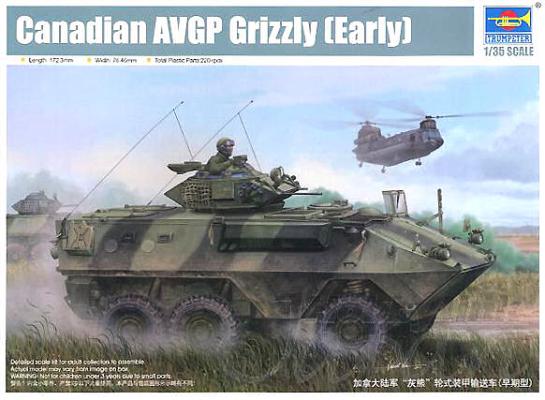
|
Canadian AVGP Grizzly (Early)Published:
History and PerformanceThe Grizzly armored personnel carrier is part of the Canadian Armored Vehicle General Purpose (AVGP) family. Also included in this family are the Coyote and the Cougar. Originally purchased by the Canadian military in the 1970s, the Grizzly is no longer in front line service. The surviving vehicles have been converted to support vehicles and some were sold to other countries. InstructionsThe instructions are in a twelve-page book form that include 15 construction steps. Each step involves exploded views with parts numbers for placement. The plans are supplemented by a two-sided painting and markings guide. The first is an IFOR vehicle marked in green and black, while the second is an all-white UN vehicle. Paint reference colors are… more |
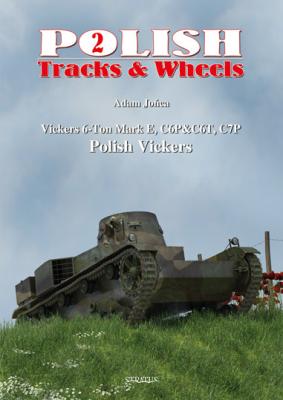
|
Polish Tracks and Wheels No. 2 Vickers 6-Ton TankPublished:
This publication covers the development and acquisition of armored vehicles for the Polish army from 1919 until 1939. Each page has several period images of the miscellaneous vehicles. Included are color profiles along with some line drawings and one blueprint of a Polish tractor. Although the text is minimal, it is quite informative. One gets the sense of the lambs being lead to the slaughter inflicted by the much superior German armor in September, 1939. Vehicles addressed include the Vickers 6 ton Mark E types A , B and E, the C6P and C6T Tractors, the C7P artillery, and recovery and combat engineering tractors. Granted, these vehicles are certainly not as well known at those of the major World War II powers, but are quite interesting in their design and performance, and… more |
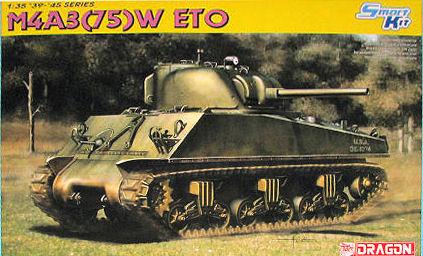
|
Sherman M4A3(75)W ETOPublished:
History and PerformanceI have never been a big follower of the Sherman (and I certainly do not mean to offend anyone), and therefore cannot offer anything new on the history or performance of this medium tank, as it has been addressed many times before. My references were limited to the Internet and the Squadron Signals publication Sherman in Action. The M4A3 was the major service variant, and was the model chosen for postwar production, and was the most produced of all Sherman variants. Kit ReviewInstructionsThe instructions are typical Dragon in their foldout scheme. There are six pages, with the first showing the many parts not being used in this build, four pages on the twelve major steps in the effort, and the last depicting the two… more |
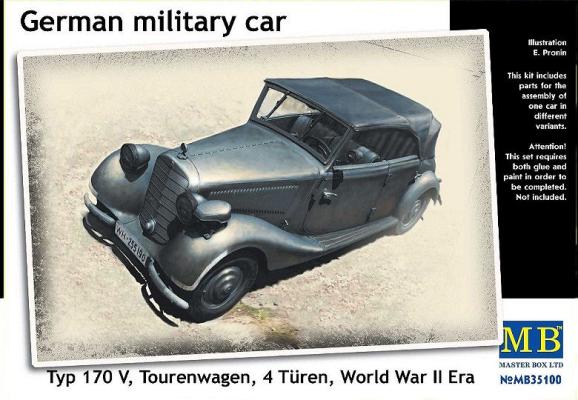
|
German Military Car Type 170VPublished:
History and PerformanceThe Type 170V made its first appearance as a military vehicle in 1937. The frame was made from a tubular X-shape, with independent front and rear suspension. The car was powered by a 38 hp, four-cylinder engine. A total of 86,615 170V cars were built by 1942, and it was the most popular “civilian“ vehicle used by the Wehrmacht. The vehicle was also built after the war by Daimler-Benz in a diesel-powered version. It proved to be very popular based on its proven wartime experience. With some research, the modeler may be able to depict a post-war vehicle with this base kit. Master Box Ltd originates in the Ukraine. This is my first build by this manufacturer. Kit ReviewInstructionsThe instruction sheet is an… more |
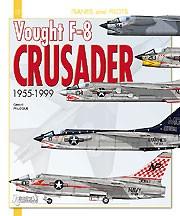
|
Vought F-8 CrusaderPublished:
FormatThis publication is offered in an 8” by 9 ½” size soft cover, with full color images on almost all pages, with a few black-and-white images interspersed. All of the images are of fine, clear quality. There are 84 pages in all, each filled with informational narrative or images of the Crusader. The text has been translated from French which has resulted In a few interesting misspellings. ContentsThe first few pages include narrative on the design, development and flight testing of the aircraft. Several paragraphs address the prototypes, followed by a brief history of the deployments and records set by the Crusader. Interestingly the Crusader was the first jet-powered aircraft to fly supersonic on its maiden flight. I can still remember seeing an… more |
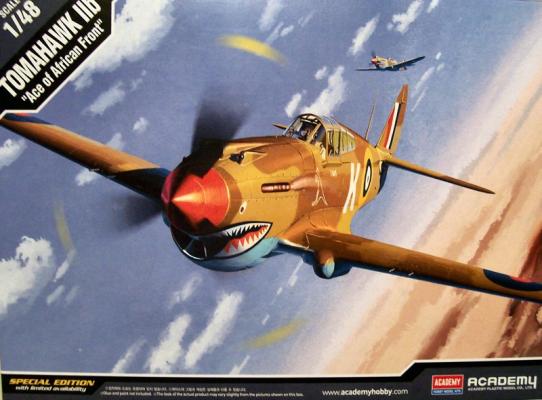
|
Tomahawk IIb - (P-40C African Ace)Published:
HistoryThe Curtis Company manufactured 13,700 P-40’s before and during World War II, with production ending on November 30, 1944. The P-40 flew with the air forces of the United States, the RAF, Australia, New Zealand, Canada, South Africa, France, Brazil, China, Turkey, and Russia and by some resources Finland. The P-40 lineage may be traced back to the radial engine-powered P-36 and H-75. The P-36 was intended to replace the P-26 Peashooter in an effort to match the high performance European fighters (the Bf-109, Spitfire and to an extent the MS-406). The Wright XR-1670 radial engine rated at 900 bhp powered the first prototype which first flew in April 1935. Soon it was evident that the radial engine-powered aircraft would be outclassed, and therefore the Air… more |
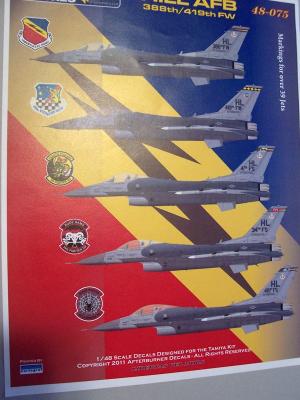
|
F-16C Hill AFB VipersPublished:
BackgroundThree modelers form the talents behind Afterburner Decals. Geoff Martin, Burtonsville, Maryland; Scott Brown, Houston, Texas; and Shawn Hull, Las Vegas, Nevada. They started this business though their love of US Military jet aircraft and the lack of decals for contemporary and past markings. In addition, Shawn Hull runs shull24.com resin accessories for modern jets. One of their goals and founding principles is to listen to their customers and give them what they want. They do not consider themselves to be "experts", but rather are willing to rely on the people that they know to provide inspiration and guidance on appealing topics. The vast majority of references are provided from outside resources. Much of the assistance they receive is from the… more |
